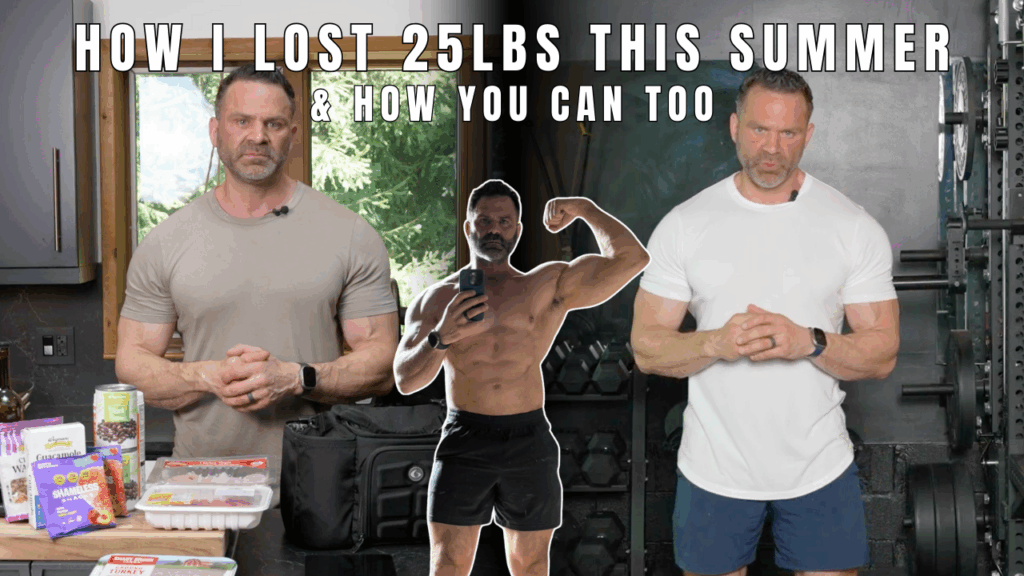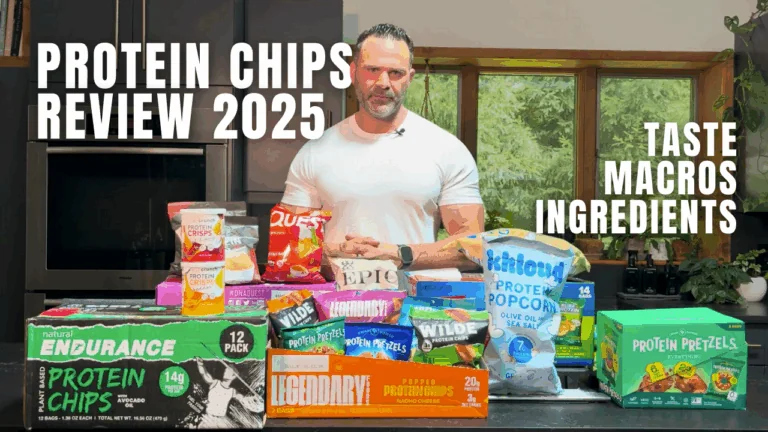Between Memorial Day and Labor Day 2025, I lost 25 pounds. Not through gimmicks or extreme measures, but with practical, repeatable strategies that I use with thousands of my clients. As a coach with 10+ years of experience helping people in Westchester and beyond, I know how challenging weight loss can be — especially when balancing careers, families, and busy lives.
This post breaks down exactly what worked for me, and how you can apply the same principles to your own journey.
Why I Decided to Cut Weight
This wasn’t about health scares. My labs were great, my VO₂ max strong, and my coronary calcium score was zero. At 18% body fat, I looked good — but I knew that if I pushed myself into the 10% range, I could look and feel even better.
That challenge became my motivation.
The Foundation: Accurate Tracking
If you can’t measure it, you can’t improve it.
To lose fat, the scale needs to go down, and that means tracking calories with precision.
- Apps: The Jacob Zemer app, MyFitnessPal, Cronometer, and Lose It are all solid options.
- Food Scale: Essential for learning portion sizes. Consider it your Rosetta Stone for weight loss.
- Single-Ingredient Foods: 80% of your diet should come from simple, whole foods that are easy to measure.
Remember, packaged and restaurant foods often carry errors — the FDA allows up to 20% leeway on labels.
Nutrition Priorities
- Protein First
Aim for 0.8x your bodyweight in grams of protein per day. If you weigh 200 lbs, that’s at least 160 g daily. Protein helps preserve muscle mass during fat loss. - Fiber-Rich Foods
For every 500 calories you eat, aim for at least 10 g of fiber. Black beans, spinach, and psyllium husk are staples. - Healthy Fats
Incorporate monounsaturated and omega-3 rich foods like olive oil, walnuts, and avocado. - Prototype Meals
Build a rotation of go-to meals you enjoy (e.g., chicken thighs, tuna wraps, Greek yogurt, Goodles pasta). This simplifies decisions and keeps you consistent.
Structure & Habits
- Meal Windows: I eat between 6 AM and 8 PM — no late-night snacking.
- 80/20 Rule: 80% whole foods, 20% enjoyable staples like high-protein desserts or fiber-rich snacks.
- Hydration: Drink 0.8x your body weight in ounces daily. Track everything — water, coffee, even seltzers. Stop heavy hydration about 3 hours before bed.
Training for Fat Loss
Nutrition drives fat loss, but training shapes the outcome.
- Strength Training: 4 days per week minimum, hitting all muscle groups twice weekly. Prioritize compound lifts like squats, bench presses, and rows. Train near failure to maximize effectiveness.
- Cardio & Steps: Aim for 10,000+ steps daily. Add 75 minutes of high-intensity intervals weekly (like 30 seconds on/off on the ski erg or air bike).
Sleep & Recovery
Sleep is a fat loss multiplier. Poor sleep disrupts hormones and reduces adherence to both diet and exercise. Aim for 7–8 hours each night. Practical steps:
- Blackout shades
- Cool bedroom temperature
- No screens before bed
Even as a parent of a 5-month-old, I do my best to prioritize recovery.
Accountability & Community
Willpower alone isn’t enough. Success rates for solo dieting hover around 4%. With accountability, they jump to 20% — and with coaching, I see 60% success rates among my clients.
Having a training partner or a coach keeps you consistent and motivated when life gets in the way.
Labs & Long-Term Health
Fat loss is about more than aesthetics. Get labs done at least annually (twice a year if you’re in your 40s+). Know your blood pressure, cholesterol, and A1C. These markers keep you proactive about your long-term health.
Final Thoughts
You can absolutely lose 25 pounds in 3 months. It takes consistency, accuracy, and commitment — but it’s achievable with the right plan.
- Track diligently
- Prioritize protein and fiber
- Train hard with weights and cardio
- Sleep and recover
- Stay accountable



